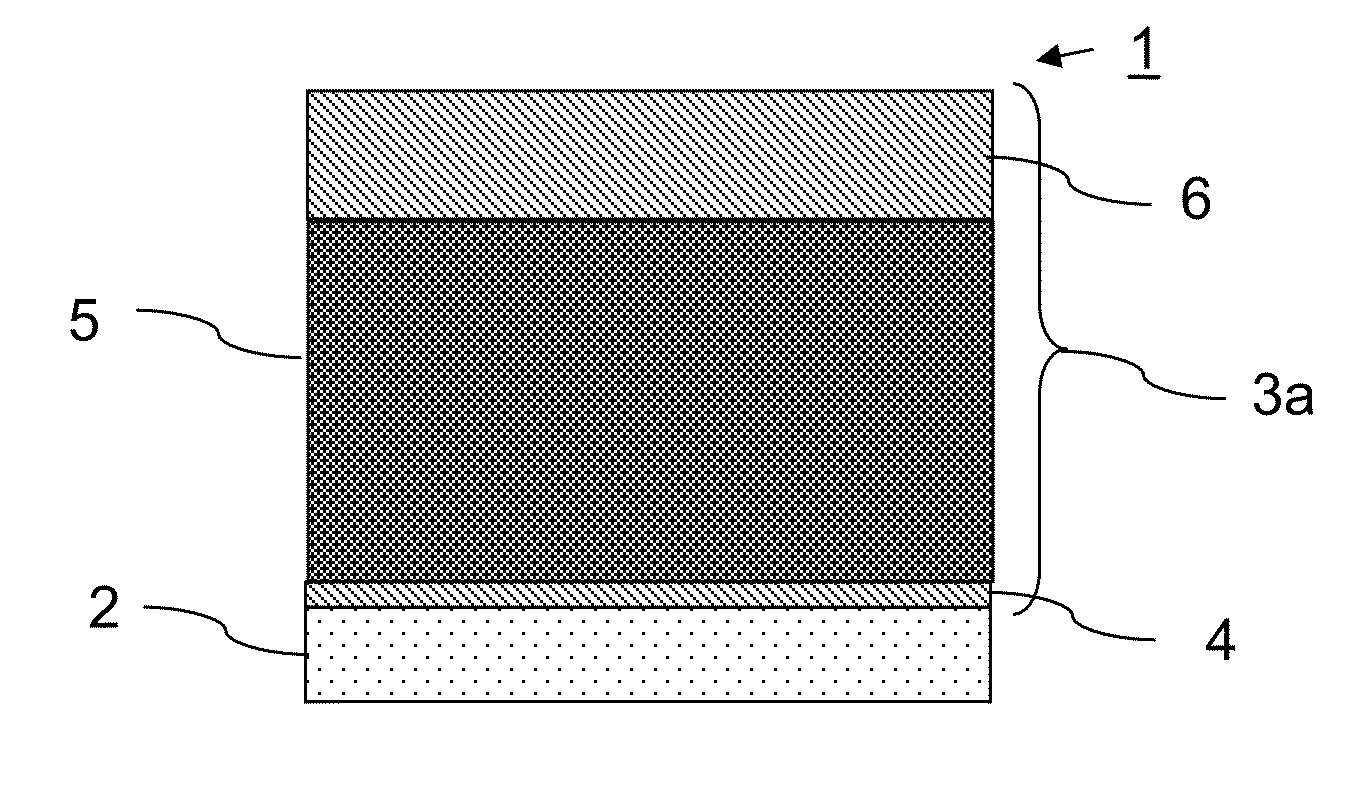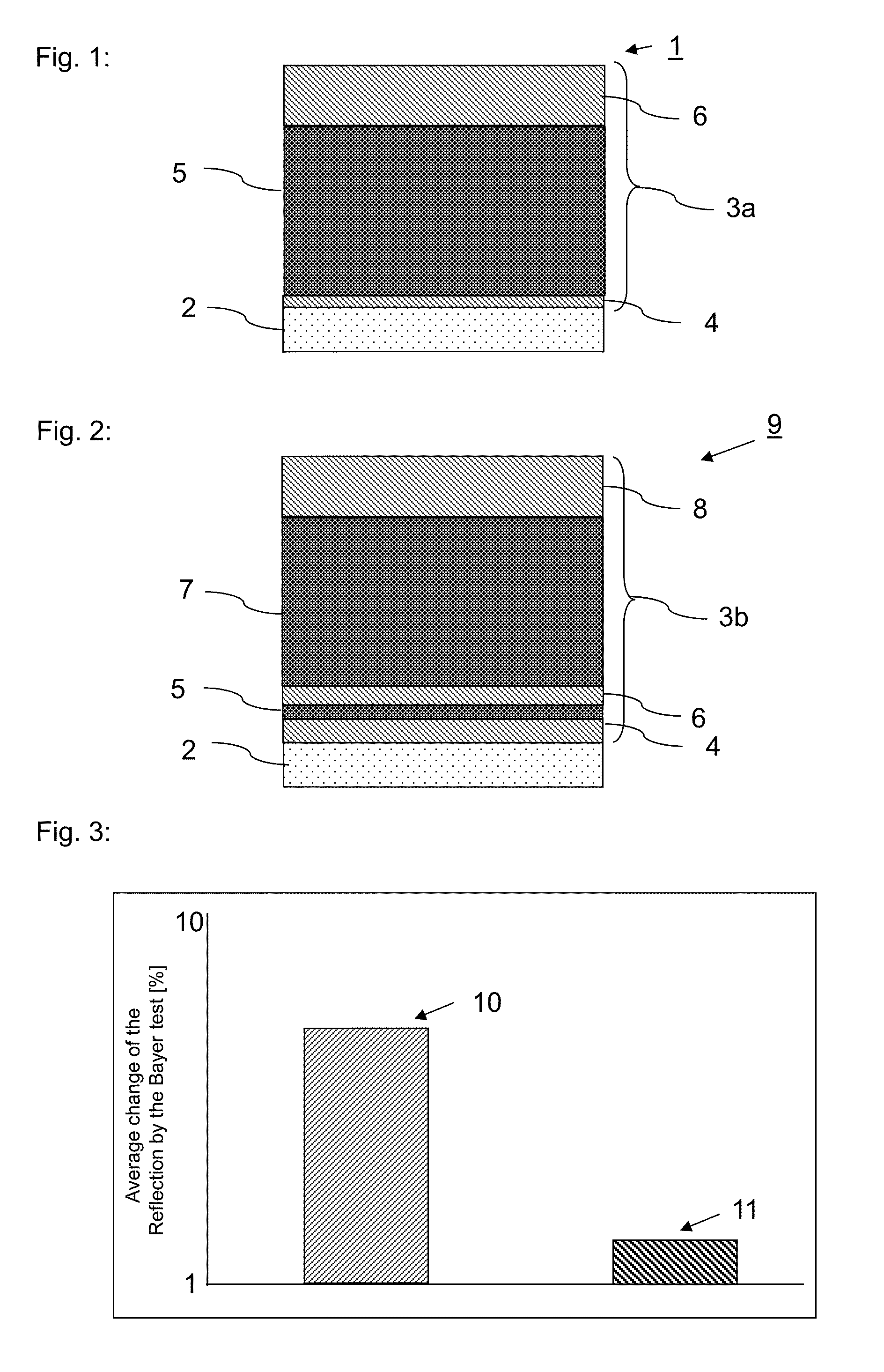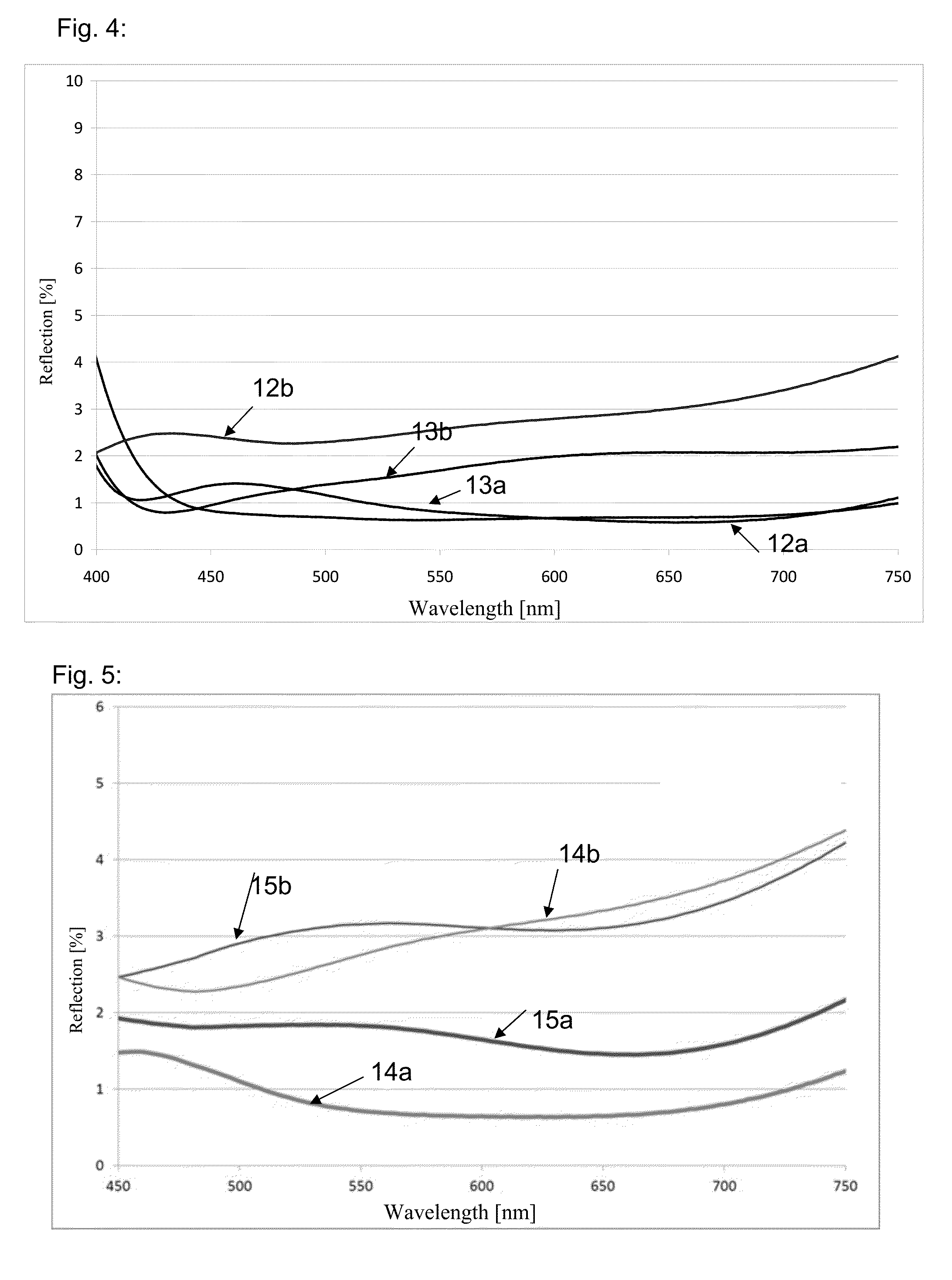Hard Anti-reflective coatings and manufacturing and use thereof
a technology of anti-reflective coating and hard coating, which is applied in the direction of optical elements, instruments, transportation and packaging, etc., can solve the problems of increased system hardness, loss of anti-reflective performance, and insufficient transparency to be useful, and achieves low processing pressure, high sputtering power, and crystal formation in aln coatings. enhanced
- Summary
- Abstract
- Description
- Claims
- Application Information
AI Technical Summary
Benefits of technology
Problems solved by technology
Method used
Image
Examples
Embodiment Construction
[0089]FIG. 1 schematically shows an exemplary embodiment of a substrate coated according to the invention 1. Here, substrate 2 is coated with a three-layered optical interference coating 3a. Coating 3a comprises layers 4, 5, and 6. Layers 4 and 6 are low refractive index layers, layer 5 is a high refractive index layer. The first low refractive index layer 4 is deposited directly on the substrate 2 and has a layer thickness in a range from 10 to 30 nm. On first low refractive index layer 4, the first high refractive index layer 5 is arranged, which has a layer thickness from 100 to 1000 nm. First high refractive index layer 5 is disposed between the first low refractive index layer 4 and the second low refractive index layer 6. In the embodiment shown in FIG. 1, the second low refractive index layer 6 forms the uppermost layer of coating 3a and has a layer thickness in a range from 60 to 100 nm. Thus, the thickness of the second low refractive index layer 6 is greater than the thick...
PUM
| Property | Measurement | Unit |
|---|---|---|
| refractive index | aaaaa | aaaaa |
| refractive index | aaaaa | aaaaa |
| refractive index | aaaaa | aaaaa |
Abstract
Description
Claims
Application Information
 Login to View More
Login to View More - R&D
- Intellectual Property
- Life Sciences
- Materials
- Tech Scout
- Unparalleled Data Quality
- Higher Quality Content
- 60% Fewer Hallucinations
Browse by: Latest US Patents, China's latest patents, Technical Efficacy Thesaurus, Application Domain, Technology Topic, Popular Technical Reports.
© 2025 PatSnap. All rights reserved.Legal|Privacy policy|Modern Slavery Act Transparency Statement|Sitemap|About US| Contact US: help@patsnap.com



